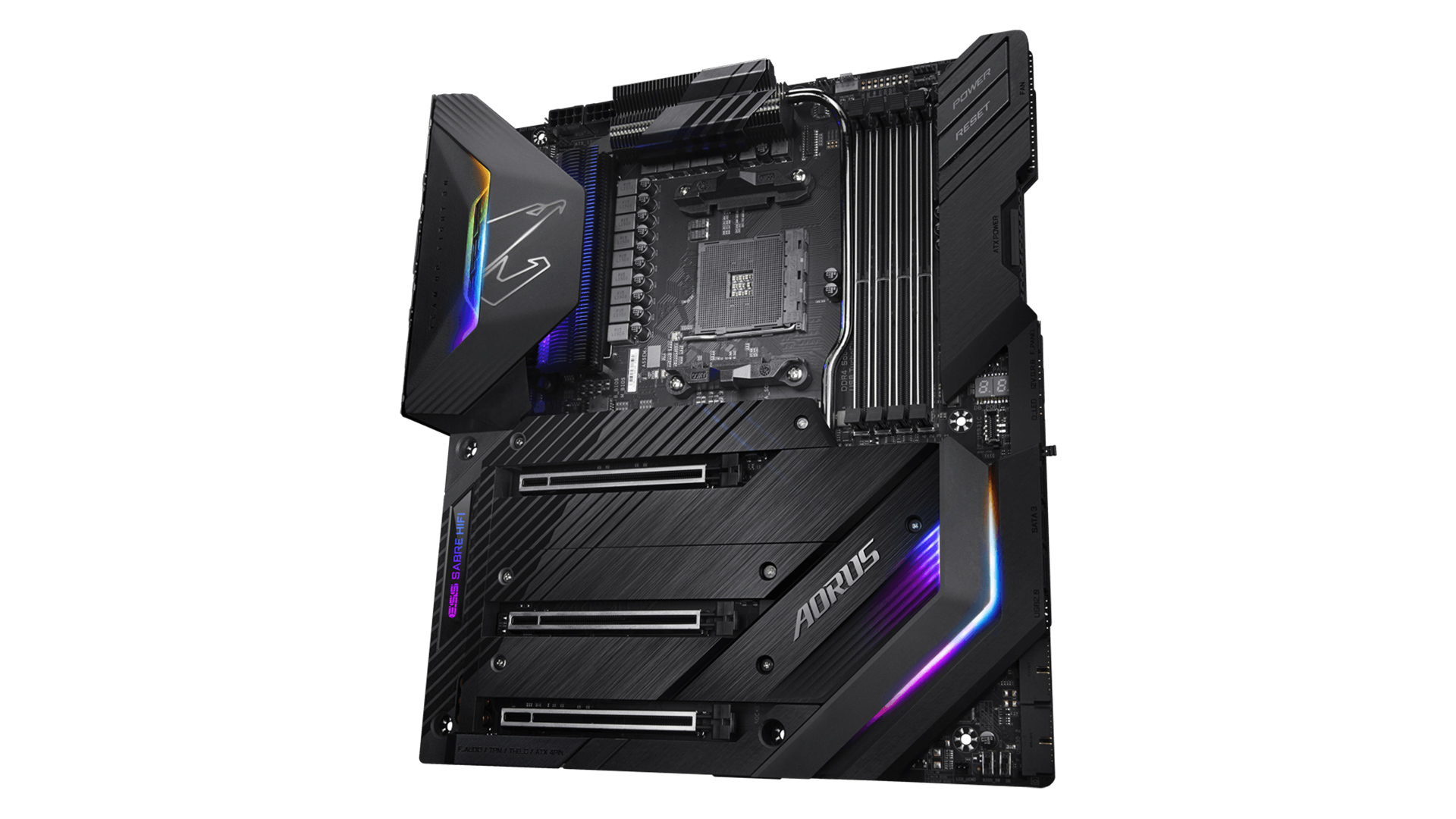
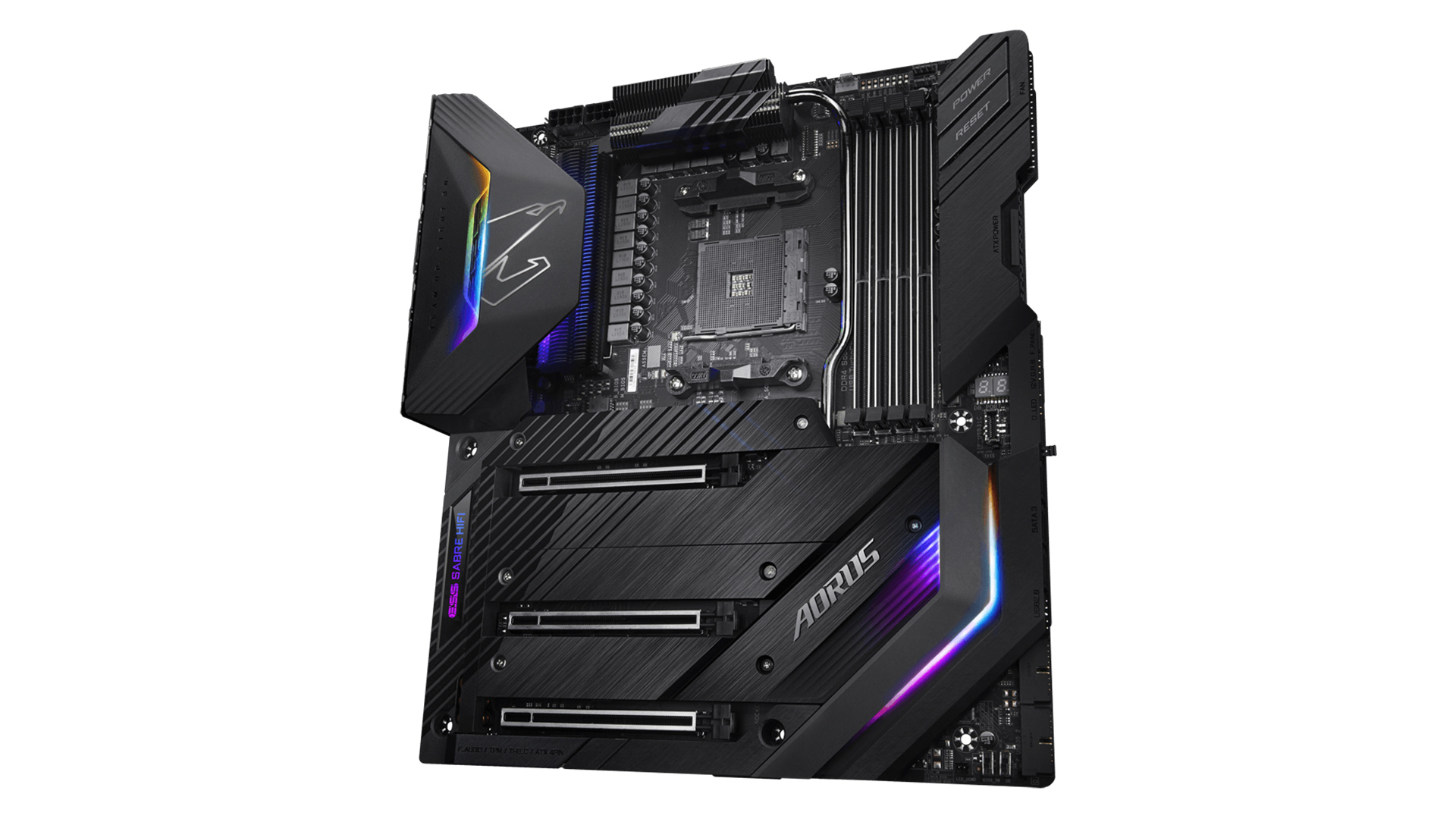
AMD goes for gold with the X570 chipset. But the motherboards won't be cheap.
AMD has a proud history of technical innovation, however this has been coupled with a sad inability to make money. Off the top of my head AMD was the first to deliver a dual core CPU, the first to integrate the memory controller in the CPU, the first to bring 64-bit computing to x86 and the first to deliver PCI Express Gen 4.
Take a look at AMD’s share price over the past two years and you will see it has climbed impressively, however the only time AMD has made any money was during the boom in crypto mining. It seems to me the rise in AMD’s share price reflects the way AMD has delivered on its road maps for the past few years and that has given the markets confidence in AMD’s promises for the future. In particular Zen arrived on time, the Zen+ refresh improved things and Zen 2 has delivered the goods with Ryzen 3000 and the Rome update to their EPYC server chips. Intel can supply up to 28 cores on a single socket while AMD now offers up to 64 cores in a single server processor.
In addition AMD has delivered Navi graphics on a 7nm process and has promised a 16-core Ryzen 9 in September. AMD is on track and is doing well.
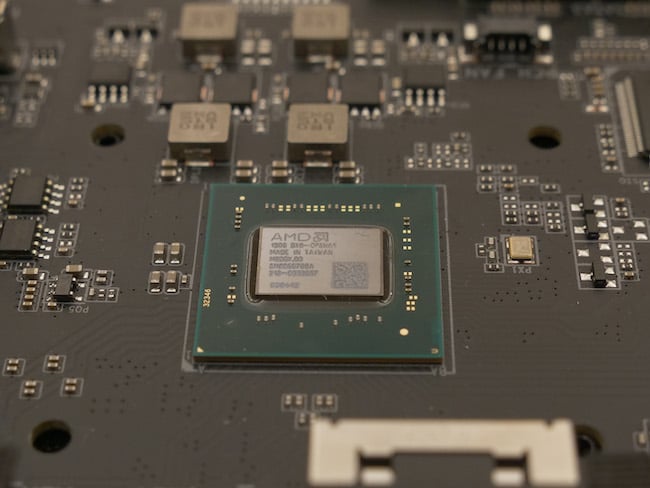
By contrast Intel’s roadmaps have gone badly wrong these past two years and the company is in a very strange place. On the one hand Intel’s 10nm process has been a disaster, it had to fire its CEO and it failed to break into mobile phones or to deliver 5G silicon. On the other hand Intel is selling stacks of 14nm processors and simply cannot deliver enough silicon to its customers.
On the desktop AMD has an advantage over Intel where they can sell you a 12-core Ryzen 9 that will pummel an 8-core Intel Core i9 in CPU intensive tasks, however games generally play better on Intel hardware thanks to their higher clock speeds. If you want ‘The Best’ desktop PC you first have to define your workload and then make a calculated buying decision about cores, threads and clock speeds. For example a mainstream gamer may be perfectly happy with an Intel Core i5-9600K with six cores/six threads and a price under £250. Allow £150 for a mid-range Z390 motherboard and you are only a graphics card away from Nirvana.
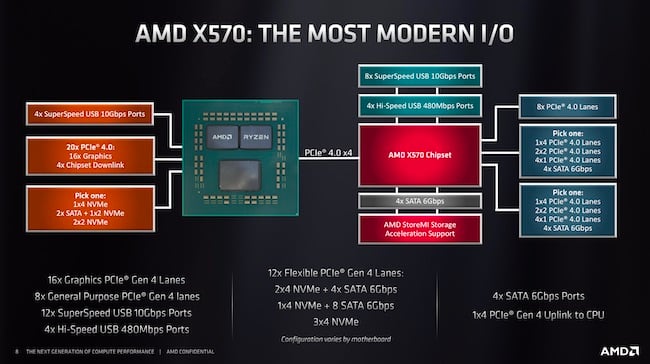
If you choose to switch to AMD you might consider the Ryzen 5 3600 with six cores/12 threads that sells for £190 however you are in for a nasty shock when you learn the cheapest AMD X570 motherboard sells for £150 and a decent mainstream model is £300. If you want to go all the way it is perfectly possible to pay over £700 for a premium X570 motherboard.
What the heck, you may wonder, happened to the concept of AMD as the budget option?
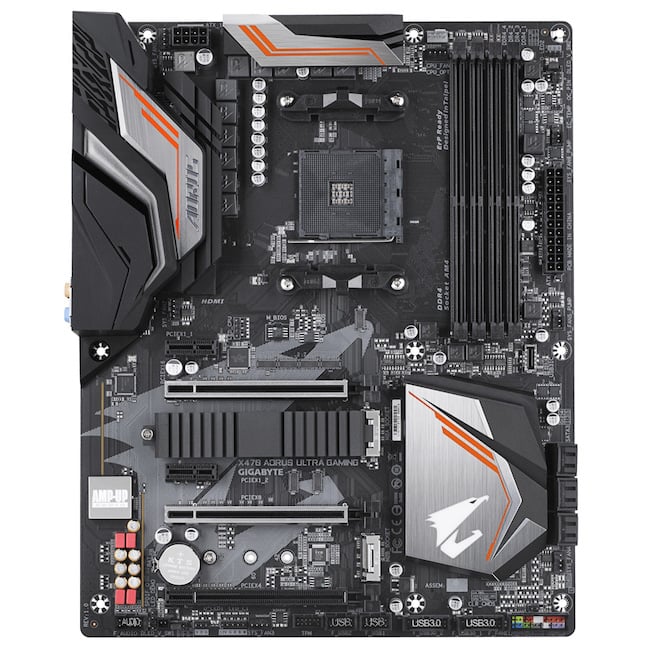
GBT X470 Aorus Ultra Gaming motherboard
What's going on?
There are a number of things going on here. For one thing Intel’s Z390 platform only covers a narrow range of CPUs from four to eight cores and does not have to consider backwards compatibility with, say, 7th Gen. Kaby Lake. By contrast the forwards/backwards compatibility matrix for AMD Socket AM4 is complicated. In addition, we know that an AMD X570 motherboard that currently supports the 12-core Ryzen 9 also has to be capable of supporting the 16-core Ryzen 9 that is coming out in September. The consequence is that X570 motherboards have VRMs (Voltage Regulator Modules) that are engineered to much higher levels than we have previously seen.
When Zen 2 launched with the X570 chipset, AMD suggested a budget chipset such as B550 would launch in 2020 i.e. six months after launch of X570. This would typically cut down features such as the number of USB ports or lanes of PCI Express which in turn would save part of the cost of the chipset and also reduce the price of the motherboard.
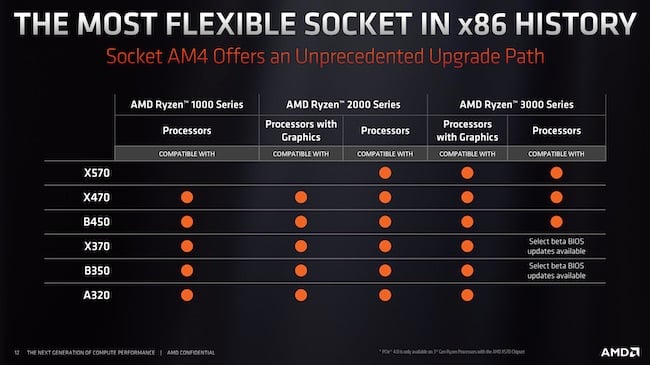
There is a good reason that every X570 motherboard (with the exception of Gigabyte X570 Aorus Xtreme) uses active cooling on the chipset and that is high power draw. We are told that X570 requires about 15W where X470 and X370 draw 7W. The thing is, when X570 is under load it actually pulls around 25W and that puts it squarely in the territory for proper cooling. The reason this chipset is so juicy is that it uses the same design as the IO chip you find inside a Ryzen 3000 CPU. In essence the chipset is a part of the CPU.
The X370 and X470 chipsets used with Zen and Zen+ were designed and manufactured by ASMedia using a 55nm process. X570 is an AMD design that has been built on a much smaller 14nm process.
Roughly half the USB/SATA/PCI Express connectivity of an X570 motherboard comes from the CPU while the other half comes from the chipset. AMD can either create B550 by tinkering with X570 to lop off a few USB ports or it has to completely redesign the it, which would result in a much cheaper chipset that does not require active cooling and that cuts the I/O connectivity in half. Either approach is possible but the latter sounds like a huge step backwards.
AMD has made considerable advances from the original Ryzen 7 1800X to the tweaked and refined Ryzen 7 2700X and now Zen 2/Ryzen 3000. The consequence is that we are expected to pay £400 for Ryzen 7 3800X or £530 for Ryzen 9 3900X. When Ryzen 9 3950X launches at £750 it will take us into uncharted territory for the desktop CPU and will effectively kill Intel’s lucrative line of HEDT (High End DeskTop) processors.
AMD’s portfolio looks impressive in 2019 and we have every confidence they will push the boundaries further in 2020 with Zen 3, taking advantage of the vacuum that has been left by Intel. The downside is that AMD is going to use the opportunity to maximise revenue and that means we will pay more for high end PC hardware.
Tags: Technology


Comments